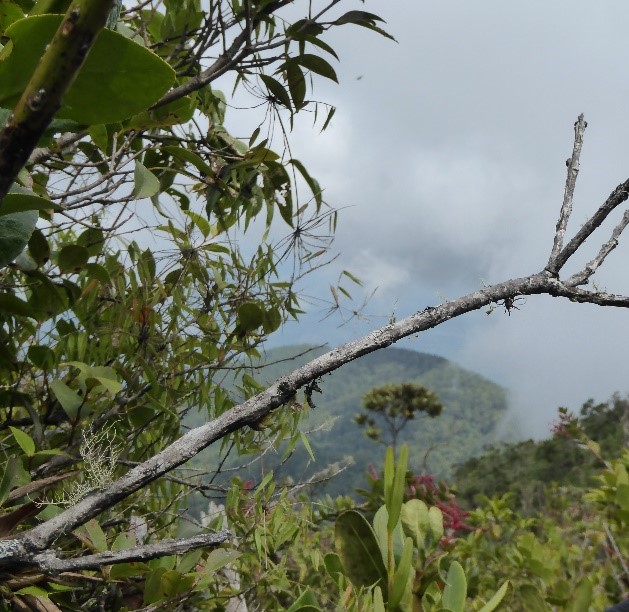

Cloud forests (also known as montane rainforests) are an extremely fascinating type of ecosystem with a diverse range of species and conditions found nowhere else on the planet. Very few people know about these amazing and unique forests, and even fewer have visited them, so we are here to tell you all the reasons why you should abandon your current holiday plans and take a trip to a cloud forest instead.
What is a cloud forest?
First things first, let us talk about what a cloud forest is. Cloud forests are found in tropical mountainous regions, usually between altitudes of 1,000 and 2,500 metres, where there is usually heavy rainfall. Air currents being pushed up the mountain cool the moist air causing persistent condensation, meaning there is a layer of cloud at canopy level all year round, giving these ecosystems their name.
Now that you know what a cloud forest is, we will explain why you need to visit one!

Rarity
There are several factors which can disrupt the formation of a cloud forest, such as altitude, proximity to the sea, and the local climatic conditions, meaning these ecosystems are not common. These forests can only be found in southeast Asia, eastern Africa, Central and South America, southern Mexico, and some areas of the Caribbean. While this list of locations may sound long, you must remember that the cloud forests can only form in the tropical mountainous regions of these areas. These conditions also mean that it is extremely difficult to replicate a cloud forest artificially, with only two botanical gardens in the world attempting to imitate these ecosystems. The specificity required for cloud forests to form means that they now only account for 1% (down from 11%) of the World’s woodlands, a percentage that has been decreasing thanks to deforestation, climate change and other human activity. Approximately 45% of all cloud forests are protected to try and limit the damage being done. The rarity of cloud forests, and the fact that they are getting rarer, is one of the reasons we think you should visit a cloud forest now – to experience their unique conditions before it is too late.
Wildlife
Unlike other rainforests, the trees in cloud forests are often short and crooked, with a lower diversity of wooded species than the surrounding drier ecosystems. The humidity allows lots of different lichens, mosses, climbing ferns and other epiphytes to grow. All of the flowering plants in the canopy provide habitats for fruit and nesting birds. Holes in the trees act as homes for breeding mammals, while those filled with water allow tadpoles to spawn. As you might imagine, thanks to their cool and varied conditions, cloud forests host an extremely rich and diverse range of species. A number of these species are only found in cloud forests, and some are even endemic to their specific rainforest. For example, in a cloud forest in the south of Venezuela there are insectivorous plants and shrub orchids which are only found on one mountain. The organisms specific to cloud forests range from fungi to mammals, and each of these ecosystems supports at least 270 species of mammals, frogs and bird. So, if you want to be surrounded by wildlife which cannot be found anywhere else on the planet then you should definitely visit a cloud forest.

Altitude
As mentioned, cloud forests typically occur between 1,000 and 2,500 metres above sea level. That being said, depending on other conditions, they can occur anywhere from 500 to 3000 metres high. Simply walking through these unique forests can be stunning, and when combined with hiking up a mountain, the views are unparalleled. Altitude is also a driving factor of speciation. Changes in elevation alter the conditions (e.g., temperature) which, in turn, means different resources (habitats, food, etc.) are available. Thus, species found at certain altitudes within the cloud forests will not be found at others, meaning a huge variety of species can live within a relatively small area. For example, at our cloud forest site in the Cusuco National Park in Honduras, 24 species of orchid bee have been found, 12 of which had never been seen in Honduras before (McCravy et al., 2016). So, if you want to see a wide range of species and how altitude can affect the organisms living there, we highly recommend heading to a cloud forest.
Research potential
As you can probably guess, because of the extremely biodiverse nature of cloud forests and the wide range of endemic species they host, there is so much research still to be done. Not only do we need to research all of the new and different species, and their ecology, but also a number of cloud forests are still almost completely unexplored, leaving many more species still to be found, classified and studied. And, aside from all the exciting discoveries still to be made, there is a huge amount of conservation research that needs to be done. Deforestation, plantations, and climate change are destroying these extremely fragile and specific ecosystems before they’ve even been properly explored. We still need to study whether these ecosystems can fully recover after human disturbance, how long recovery takes, how many species are being lost in the process and so on. Plus, changing climatic conditions and increasing global temperatures threaten the existence of cloud forests continuously. Their conditions and adaptability need to be studied further, and the implementation of more protection measures needs to be facilitated.

Operation Wallacea are fortunate enough to have research sites in the Cusuco National Park, a cloud forest in Honduras. Here we are carrying out a wide variety of projects, ranging from looking at the environmental factors affecting the diversity of ectomycorrhizal fungal communities within the forest, to understanding how water pools in bromeliads support such a large range of aquatic invertebrates. The community ecology of the bats, birds, snakes, and moths supported by this cloud forest are being studied through a multitude of projects, and a 13 year-long transect-based survey is monitoring the large and medium-sized mammals of the forest to research the hunting pressures within the park. We are also interested in researching the role cloud forests play in the sequestration of carbon, an extremely relevant and important topic in this day and age. Therefore, we have a project running investigating the carbon stocks within cloud forests and how they change with all the different habitats the ecosystem supports.
If after reading this you’ve decided you want to explore a cloud forest then go check out what our site has to offer! And if the research potential of these fragile, biodiverse, amazing ecosystems has sparked an interest, we would be happy to facilitate your involvement in our research. Plus, if you are a university student with a dissertation or Master’s thesis topic idea then please get in touch! We would love to see you on site with us soon!
McCravy KWM, Van Dyke J, Creedy TJ, Roubik DW (2016) Orchid Bees (Hymenoptera: Apidae: Euglossini)
of Cusuco National Park, State of Cortés, Honduras. Florida Entomologist 99: 765-768
Social Media Links